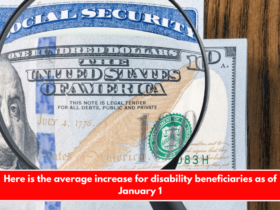Over 71 million people get regular payments from the Social Security Administration (SSA) every month. These payments are for retirement, Supplemental Security Income (SSI), and Social Security Disability Insurance for people with disabilities.
SSDI is one of these programs that millions of disabled people depend on. It gives important monthly payments to people who can’t work because of their physical condition.
The amount of money someone gets from SSDI each month depends on their work experience and how bad their disability is. The range is from $1,537 to $3,822. To get these benefits, people must meet certain requirements, such as showing that their disability significantly affects their ability to do substantial gainful activity (SGA).
The SSDI program for disability beneficiaries
The SSDI program is very important because it helps millions of Americans with disabilities by giving them money when they can’t work very much. The exact amount of SSDI benefits can change from year to year, mostly because of cost-of-living adjustments (COLA).
The SSA uses COLA to keep up with inflation and make sure that beneficiaries’ payments keep their buying power even as the cost of living goes up.
Increase in SSDI payments for 2025
It is expected that the COLA will cause SSDI payouts to go up by 2.63 percent in 2025. Even though this increase isn’t as big as some in recent years, it’s still a big help for people who count on the program.
The Senior Citizens League says that the smaller COLA shows that inflation has leveled off. For example, the COLA was 3.2% in 2024 and 8.7% in 2023, when inflation was very high.
Prices haven’t been going up as quickly as they did in the last couple of years, which is a sign that the economy is getting better. That being said, it also means that people who get SSDI will see smaller raises in their payments than the bigger ones they got in the past.
How will this increase affect SSDI beneficiaries?
The 2.63% rise in SSDI benefits will have different effects on people who get it based on how much they get now. Here is a rundown of how the price hike will affect your monthly payments:
- Average SSDI payment: Currently $1,537, it will increase to $1,577, representing an additional $40 per month.
- Blind beneficiaries: Their monthly payments will rise from $2,590 to $2,658.
- Maximum SSDI payment: The maximum payment will increase from $3,822 to $3,923 per month.
People who get the average amount of SSDI will see their payments go up by $480 each year. For people who make $2,000 a month, the monthly raise will be $52, which adds up to an extra $624 a year.

The role of the CPI-W and uncertainty in the final calculations
Bear in mind that these estimates are just that—an estimate. The real COLA for 2025 won’t be decided until October 2024. The Consumer Price Index for Urban Wage Earners and Clerical Workers (CPI-W) is the main tool that the SSA uses to figure out the yearly adjustment.
This index measures inflation, and because it changes throughout the year, the end COLA might be a little different from what we think it is now.
In the past, COLA changes have been very different. In years like 2010, 2011, and 2016, for example, when inflation was low, there were almost no COLA raises. The last two years, on the other hand, saw above-average rises because of the economy, with a 5.9% change in 2022 and a notable 8.7% rise in 2023.
Because the CPI-W shows how inflation is changing over time, those who will benefit from it should be aware that the final increase could change a little based on how the economy does before October. When inflation is low, COLA adjustments are usually pretty small. When inflation is high, however, raises can be bigger.
The impact of COLA on long-term financial planning
Any change in the COLA is important for people who get SSDI because these payouts are often their main or only source of income. COLA makes sure that their benefits keep up with inflation, which keeps their buying power from going down.
The expected 2.63 percent raise in 2025 isn’t very big, but it’s a key way to protect the standard of living for people who depend on SSDI.
But it’s important for beneficiaries to know that COLA changes aren’t meant to cover all of the costs of living that are going up.
For example, even if inflation levels off overall, prices for things like housing and health care may continue to rise at a faster rate. In some places, this can mean that people who get SSDI have to pay more, even though their earnings are adjusted for inflation.
Also See:- Before understanding the 2025 COLA hike: Review the October 2024 Social Security payment schedule















Leave a Reply